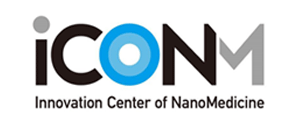As we learn more and more about the biology of cancer, we have been able to develop therapies that are based on selectively targeting and killing cancer cells. One such therapy is called boron neutron capture therapy (BNCT). This is a radiotherapy process which involves injecting boron into cancer cells and then exposing it to neutrons. This results in the boron undergoing nuclear fission which, in turn, kills cancer cells. If the doctors can make sure that the boron is restricted to only cancerous cells, then the cancer can be destroyed without harming healthy cells.
Scientists have discovered a way to trigger this selective uptake in living cells through the use of boronophenylalanine (BPA). BPA is a compound that contains boron and has a phenylalanine structure. One of the distinguishing features of cancer cells is that they contain a great deal of special structures called LAT1 amino acid transporters. These structures recognize phenylalanine and allow it to be transported into the cancer cells. When phenylalanine is available outside the cancer cells, these transporter structures on the surface of the cell bring it into the cell and kill it. BPA is currently considered to be the best drug for BNCT therapy.
However, BPA has a serious problem. When BPA levels increase inside a cancer cell, it is transported back out of the cell through an “antiport” mechanism. This makes it difficult for BNCT to be very effective in some cases. In order to counteract the antiport effect, patients need to receive a continuous infusion of BPA for thirty to sixty minutes in order to maintain the required amount of BPA inside the cancer cells for effective therapy.
In order to deal with this problem, a team composed of scientists from Tokyo Tech, Kyoto University and Innovation Center of NanoMedicine led by Prof. Nobuhiro Nishiyama explored other ways to keeping the boron inside the cancer cells longer than previous therapies. He said, “We assumed that modulating the presence of BPA inside the cell will ensure that they are not sent back out via their antiport mechanism.”
To test their theory, the team mixed a compound called polyvinyl alcohol (PVA) with BPA in order to form a PVA-BPA complexes. They then observed the way in which this compound was internalized by cancer cells. It turned out that incorporating the PVA did not alter the phenylalanine structure of BPA. This allowed the LAT1 transporters to recognize the PVA-BPA complex. However, this compound was too big for the LAT1 transporters to pass it into the cancer cells. Instead, the LAT1 transporters enclosed the complexes inside of organelles called endosomes and brought them into the cancer cells. Because the BPA was now enclosed in the endosomes, the cancer cells were unable to immediately push it out with the antiport mechanism. This meant that the boron would be present in the cancer cells long enough for the cancer cells to be killed. This new method was tested in animal models and the anti-cancer effect of BNCT therapy were enhanced.
Adding PVA provides a very simple solution to boost the therapeutic potential of BPA. Nishiyama said, “This technique is effortless and offers a novel approach for drug delivery, focusing on the metabolic elimination processes of drugs. We will advance research on the PVA-BPA complex for clinical trials in cooperation with STELLA PHARMA CORPORATION who has
